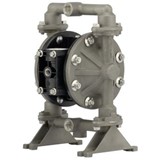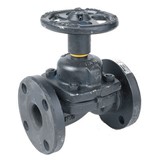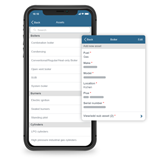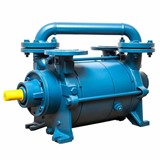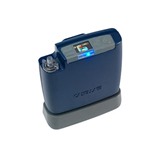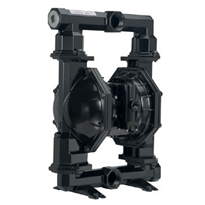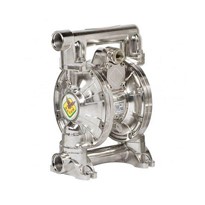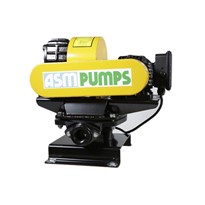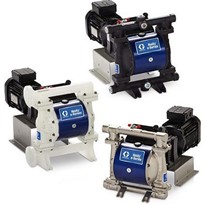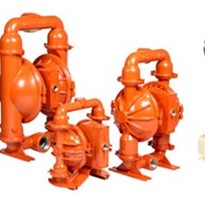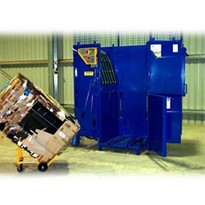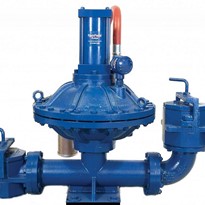What are air operated diaphragm pumps?
An air operated double diaphragm pump is a pneumatic pump that uses an air valve that directs compressed air between two sides of the pump, back and forth.
Air operated diaphragm pumps can transfer liquids with low, medium or high viscosities, as well as liquids with suspended solids. They also can handle many aggressive chemicals such as acids because they can be constructed with a wide variety body materials and diaphragms.

What are air operated diaphragm pumps used for?
As general workhorse devices, AODD pumps are utilized in many different applications, including:
- Transport motor vehicle and truck workshops
- Mining – dewatering above and below ground sites and quarries, transferring of slurries and sludge, transferring of fuel for vehicles or heavy construction equipment
- Coatings - transferring, dispensing and dosing paint or ink, feed pump for spray guns
- Ceramics - ceramic slips, day tank transfer, filling molds
- Chemical Processing - loading and unloading tankers, portable utility pump, batching or dosing chemicals
- Electroplating and Anodizing - replenishing chemicals in plating or metal finishing tanks, agitation of cleaning solutions, filtration
- Pulp and Paper - printing inks, glues, bulk adhesive transfer
- Oil and Gas - filter press, bulk fuel transfer, settling pond transfer
- Waste and Wastewater Treatment - transferring suspended solid media, filter press, utility pump

How do air operated diaphragm pumps work?
AODD pumps utilize dual flexible diaphragms mounted to a shared shaft which moves back and forth repeatedly in strokes to pump fluids into and out of the pump’s fluid chamber. This movement creates a vacuum, which intakes fluid through an inlet port.
When the diaphragms are subsequently pushed in the opposite direction back to their original positions via compressed air, the fluid is expelled from the product chamber via an outlet port. This cycle repeats while the AODD is in operation, which creates the pumping action this device is known for.
In Figure 1, the left diaphragm has been forced towards the fluid chamber, and in doing so has displaced the liquid through the open valve at the top of the discharge port. At the same time liquid is drawn into the right-hand chamber via the right diaphragm. At the end of the stroke, the positions are reversed and the cycle repeats in the opposite direction, as shown in Figure 2.

Figure 1

Figure 2
What are the advantages of air operated diaphragm pumps?
AODD pumps offer a number of advantages, namely:
- AODD pumps allow for less wear to the diaphragm compared to a mechanically driven pump, due to the balance of pressure by the compressed air. This means that AODD pumps can run for longer periods of time without damage and have a longer lifespan as well.
- Their design allows full separation of fluids and sensitive part components, which reduces the frequency of repairs.
- They can handle abrasive and viscous sludges, slurries or fluids. Also, the smooth pumping mechanism of the pump means that they are well-suited for shear-sensitive fluid applications.
- Because their working mechanisms don’t produce a spark, AODD pumps are suitable for use in hazardous areas, such as where flammable materials are present.
- As the only stationary seals in AODD pumps are between the wetted components and the exterior of the device, leakage can only occur if one or both of the diaphragms fail.

How to use an air operated diaphragm pump
AODD pumps come with a range of benefits and can have somewhat specialized requirements for their installation. Adhering to these instructions can help avoid a variety of costs and damages to your AODD pump:
- They must be mounted on a ridged base or surface as the mechanism of this pump’s diaphragms cause it to vibrate during operation. Suction and discharge connections should be flexible connections (such as a rubber hose), not ridged pipe, and should be compatible with the fluids being pumped.
- The fluid inlet suction pipe or hose should be at least the same size as the suction port. If this is not adhered to, pump starvation can occur. It also should be as short and as close to the supply vessel as possible.
- Ensuring a properly sized air supply line is crucial. Using an airline that is too small can lead to starvation of compressed air. Proper air flow is required for the AODD pump to operate effectively.
- To regulate the flow and pressure of AODD pumps, an air pressure regulator assembly should be installed in the pump’s air supply line to regulate incoming air pressure.
How to repair an air operated diaphragm pump
In the event of failure of your AODD pump, you should check the following:
- Ensure that the air inlet size isn’t too small.
- Inspect the pump’s muffler for icing. AODD pumps are loud when in operation, so mufflers are often used. As a result of air compression of the device, the overall temperature of the muffler can sometimes be lowered to below freezing. In particularly humid environments, this can lead to ice buildup. (Note: Icing particularly occurs with competitor pumps. ARO EXP Series diaphragm pumps are expertly engineered to provide ice-free operation, thanks to our patented quick-dump valves that release icy air into the atmosphere, thus preventing freezing from occurring.)
- Check the pump’s inlet and outlet lines for any blockages, including sealed or partially sealed valves.
- Regularly inspect the AODD pump for leakage. As part of routine pump maintenance, replace any PTFE orings they are prone to leakage.



